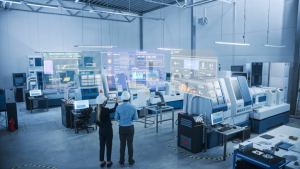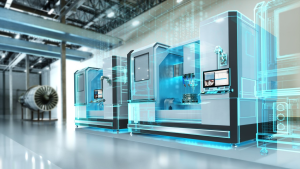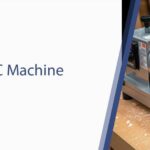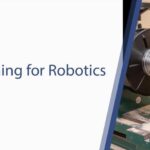Real-World Case Studies: CNC Machines in Industry 5.0 Applications
Industry 5.0 represents an approach where human-machine collaboration is emphasized, focusing on customized production and sustainability.
In this new era, CNC machines go beyond being high-efficiency tools and evolve into smarter systems with human-machine collaboration and AI-assisted decision-making processes.
CNC machines play a significant role in the successful implementation of Industry 5.0, including innovative applications such as increasing efficiency, producing personalized products, ensuring sustainability, and improving worker interaction.

Industry 5.0 and CNC Machines: Human-Machine Collaboration
The most prominent feature of Industry 5.0 is the reshaping of human interaction with machines. CNC machines, while minimizing human intervention, mark a shift towards a time when humans contribute to the creative and decision-making processes.
In this approach, machines are not only functional but also positioned as flexible and adaptive systems. Humans play an active role in directing machines, detecting errors, and optimizing production processes.
For instance, CNC machines can produce products based on predetermined standard parameters, but the human factor in the production process allows for customization according to customer demands.
Case Study:
An automotive supplier company has implemented a production line based on Industry 5.0 principles, giving workers more autonomy with CNC machines. Workers monitor the data flow from CNC machines, adjusting cutting speeds and parameters in real time.
This synergy between human labor and machines has provided production flexibility and increased operational efficiency, allowing for the quick production of customized parts in response to specific customer demands.

AI and IoT Integration for Smart CNC Machines
The integration of Artificial Intelligence (AI) and the Internet of Things (IoT) technologies into CNC machines plays a crucial role in Industry 5.0 applications.
When CNC machines are equipped with these technologies, they not only monitor the condition of machines but also continuously optimize production processes by analyzing data at every stage of production. AI-powered machines learn from past data, ensuring more efficient and error-free production.
Furthermore, IoT sensors enable real-time detection of anomalies such as overheating, vibration, or other irregularities, alerting operators to potential issues before they lead to costly downtimes.
Case Study:
An aerospace company adopted an AI-driven production process to enhance the quality of parts produced using CNC machines.
These machines are equipped with sensors that track every step of the product’s journey.
AI algorithms analyze past production data to determine the optimal processing parameters and dynamically optimize each production line in real time. This system ensures parts are produced with high precision while reducing production time.

Custom Production and Flexibility: The Role of CNC Machines
Industry 5.0 places a strong emphasis on personalized production. Unlike traditional mass production, this era focuses on tailoring each production process to meet end-user specifications.
CNC machines, with their flexibility, are able to quickly and efficiently produce customized products based on customer needs. Personalized production is becoming increasingly common in industries such as healthcare, automotive, and fashion.
CNC machines can be programmed to accommodate specific designs from conception to final product, offering unparalleled customization.
Case Study:
A medical device manufacturer has adopted an Industry 5.0 approach by producing custom prosthetics. CNC machines are programmed to manufacture parts based on the unique specifications of each patient.
Human operators adjust the designs according to the patient’s needs, and the machines execute the production process accordingly. This type of manufacturing not only increases customer satisfaction but also provides greater flexibility and speed in the production process.
Sustainability and Efficiency: The Future of CNC Machines
Industry 5.0 also prioritizes sustainability. CNC machines have the capacity to produce goods using fewer materials and reduce waste in the process. These machines can be equipped with sensors to optimize energy consumption and enable more eco-friendly production processes.
Additionally, energy-efficient components can be integrated into CNC machines, allowing for higher production with lower energy usage. The integration of AI and IoT ensures that energy consumption is monitored and optimized in real time.
Case Study:
A textile factory has established a production line equipped with CNC machines and IoT sensors to reduce both energy consumption and material waste.
The system monitors energy efficiency at every production step and optimizes machine settings to reduce energy usage. In addition, material waste is minimized by determining parameters that reduce inefficiencies in the production process.
Conclusion: The Future of CNC Machines in Industry 5.0
Industry 5.0 is revolutionizing not only the efficiency and speed of CNC machines but also human-machine collaboration, customized production, and sustainability.
Real-world examples show how CNC machines are becoming more flexible, intelligent, and efficient in this new era.
Human interaction with machines, the customization of production processes, and the enhancement of efficiency are key pillars of Industry 5.0. The ability of CNC machines to adapt to this transformation presents significant opportunities for both businesses and the global industry in the future.
Contact Us:
- E-Mail: info@radonix.com
- Phone: +90 (553) 920 5500








